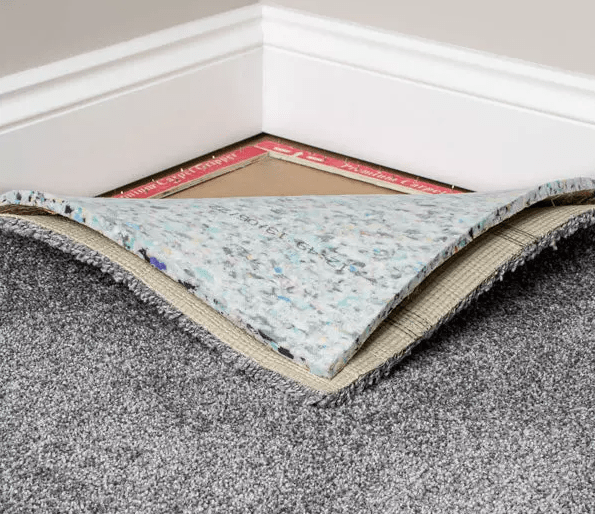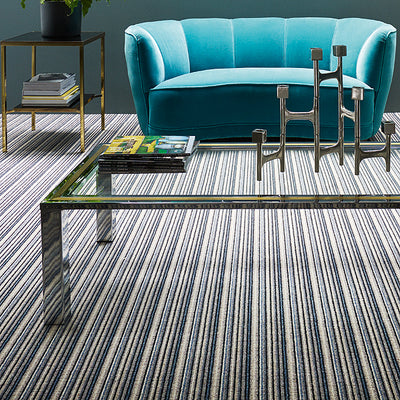
Deciphering the Underlay Puzzle: Choose Perfectly for Your Carpets
Quick Links
Understanding the Role of Underlay
Factors to Consider Whilst Choosing an Underlay
Matching Underlay with Carpet Type
Choosing the perfect carpet is only half the battle when it comes to creating a soft, inviting floor. The unsung hero of any successful carpet installation is the underlay. This vital component, often overlooked, can make all the difference to your carpet's feel, durability and overall lifespan.
Understanding the Role of Underlay
A crucial yet frequently disregarded element of carpet fitting is the underlay. This fundamental part fulfils multiple functions. It serves as a buffer, absorbing the brunt of footfall, diminishing noise, offering insulation and thus prolonging your carpet's lifespan. In effect, the choice of underlay has a transformative effect on a room’s ambiance. It enhances the plushness of the carpet underfoot, even potentially improving sound quality. This multi-faceted function of an underlay underlines its significance in the carpet installation process. It's not just about enhancing comfort and durability but also about augmenting the acoustic and thermal aspects of your living space. As such, it's clear that the role of underlay extends beyond simply supporting your carpet, contributing to a higher quality, more comfortable home environment.
Types of Carpet Underlay
Diving into the world of underlays, you'll primarily encounter three types: rubber, foam, and felt. Rubber underlays are a favourite choice for many, due to their robustness and exceptional sound insulation qualities. If you're looking for a softer feel beneath your feet, foam underlays, commonly constructed from polyurethane, offer superior comfort and are excellent at trapping heat, providing an additional layer of insulation. Lastly, felt underlays, while not as prevalent, deserve mention for their eco-friendly composition and incredible durability. Understanding the distinguishing characteristics of these underlays can assist in making an informed choice.
Factors to Consider Whilst Choosing an Underlay
Selecting the ideal underlay necessitates careful consideration of a few elements. Foremost is the underlay's thickness, typically, a 10mm thickness is preferred for optimal comfort. Following this, density plays a crucial part; it dictates the underlay's support and longevity. High-density underlay is advised for areas experiencing substantial footfall. Finally, room type is integral in your decision. Bedrooms, generally having a low footfall, can benefit from a thicker, luxurious underlay, whilst areas like hallways, with significant traffic, would necessitate a denser underlay. Considering these elements can aid you in making a choice that ensures your carpet not only feels comfortable underfoot but also stands the test of time. Remember, your underlay is the unseen champion of your carpet’s longevity and your home's comfort.
Matching Underlay with Carpet Type
Pairing your carpet with the right underlay is a vital step in maximising its performance. It's essential to know that different carpet types are better suited to specific underlays. For instance, wool carpets typically partner well with rubber or felt underlays. On the other hand, synthetic carpets exhibit more flexibility, working efficiently with all types of underlays. However, one must never overlook the manufacturer's advice. Any discrepancies between the chosen underlay and the manufacturer's recommended type could potentially result in the carpet's warranty becoming invalid. Thus, always consult the carpet's guidelines before finalising your underlay choice to ensure you get the most out of your carpet and underlay combination.
Measuring for Underlay
When it comes to estimating the amount of underlay you'll require, first note down the measurements of your room's length and width. Multiply these figures to obtain the total area in square metres. However, don't forget to add an extra 10% to this figure as a contingency for potential cutting errors and any extra fitting around corners or unique room features. This is also essential as underlay is often sold in rolls and you may need to account for some additional area for alignment. Take into account areas in the room where the underlay is not necessary, such as under fixed cupboards or around fireplaces, and subtract this from your total. By carefully calculating your needs, you can avoid buying excess underlay, saving money and reducing waste.
Installing Your Underlay
The correct installation of your underlay is paramount for optimising the longevity and comfort of your carpet. Initiate the process by ensuring your subfloor is thoroughly clean and level. Roll out the underlay with the rubber or foam side facing downwards. To secure it in place, use staples or adhesive, depending on your preference and the specific recommendations of the underlay manufacturer. Carefully trim any surplus underlay along the edges, ensuring it doesn’t extend beyond the gripper rods. Lastly, position your carpet on top, carefully following the manufacturer's guidance. Efficient installation can help you fully realise the benefits of your chosen underlay, from enhancing the plushness of your carpet to improving the acoustic qualities of your room.
The Environmental Impact of Underlays
The eco-conscious consumer should not overlook the environmental implications of underlays. It is possible to make a green choice while also ensuring your carpet performs at its best. There are underlays available that are manufactured from recycled materials or natural fibres, which are sustainable alternatives to traditional products. These eco-friendly options can deliver the same performance as their conventional counterparts, offering durability and comfort, but with a lower environmental footprint. In addition to the material used, the end-of-life disposal of the underlay also needs to be factored in. Several underlay manufacturers have designed their products to be fully recyclable after use, further reducing waste. Therefore, it's worth investing the time to research environmentally friendly underlay options. After all, each choice we make in our homes can contribute to a more sustainable planet.
Conclusion – Making the Right Choice
Choosing the optimal underlay for your carpet may initially seem like a complex task. However, armed with a thorough understanding of underlay's critical role, a recognition of the differing underlay types and the key factors that guide their selection, the process can be vastly simplified. It's pivotal to remember that a quality underlay is not just a mere carpet supplement, but an essential component that can drastically enhance the longevity and comfort of your carpet, whilst simultaneously transforming the ambiance of your home. Therefore, investing time and thought into this often overlooked element is not only wise, it's indispensable for a well-rounded, quality carpet installation. So, keep the knowledge acquired in this guide close at hand, for it can help illuminate the path to the perfect underlay for your carpet. Ultimately, the right underlay will play a significant role in creating a homely environment that's both inviting and enduring.







